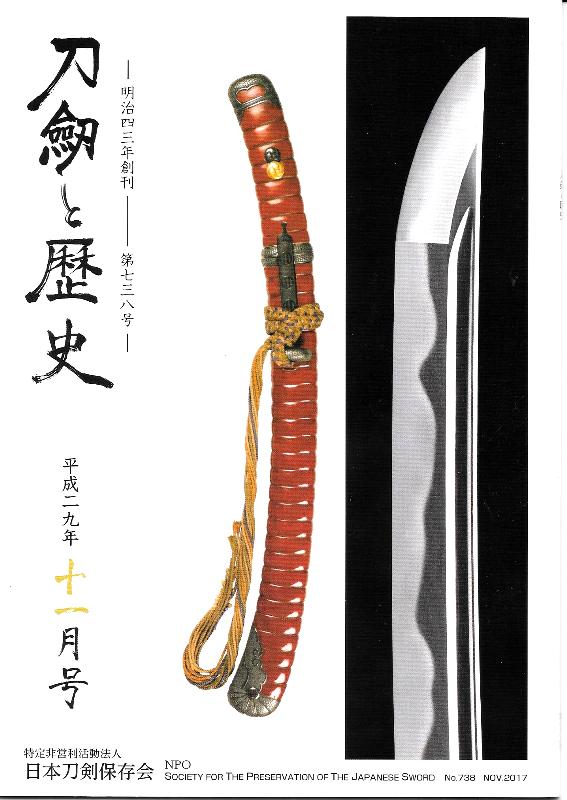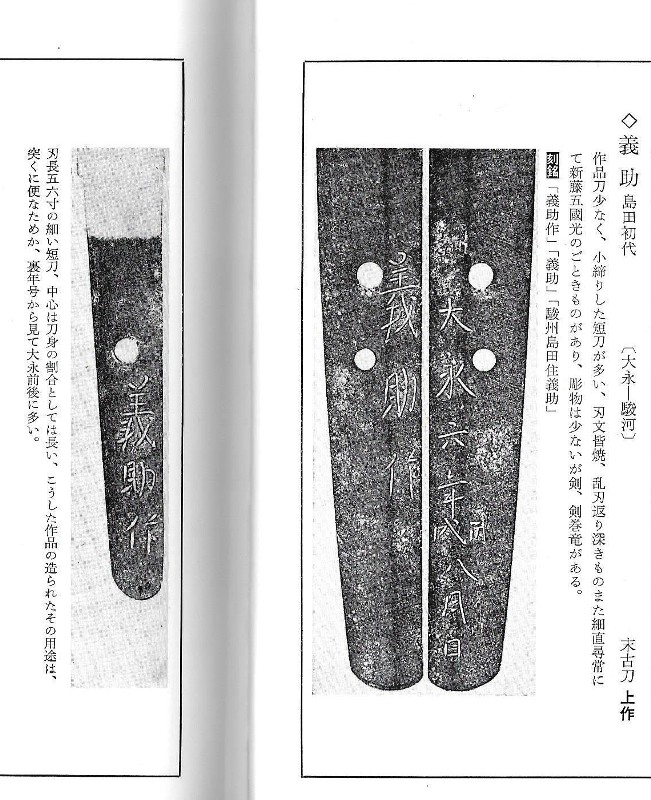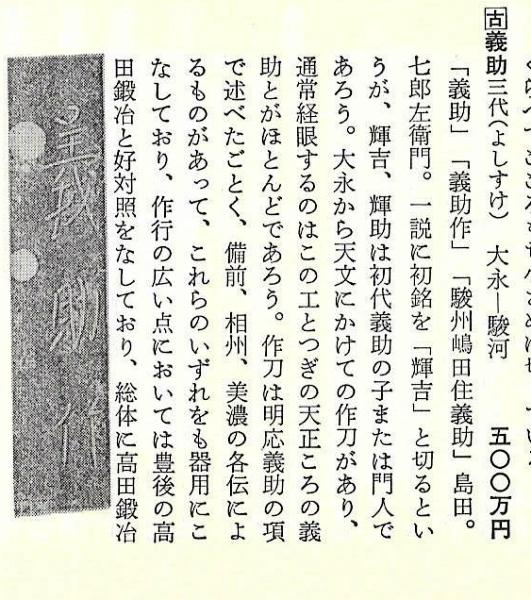.jpg)


Shimada Gisuke Wakizashi
S0394
Major Reduction
Sold
A hirazukure hitatsura wakizashi with mitsumune attributed to Shimada Gisuke, in ebi aiguchi koshirae. Suriage, machiokure, kirijiri. Nagasa: 1 shaku 1 sun 7 bu (35.45 cm. 13.96"). Length 2.9 cm. Kasane: 4.7 mm. Niedeki hitatura, ha ine, kinsuji, nado. Mokume, itame nagare, masame. Profuse fine jinie, chikei, nado. NBTHK Hozon kanteisho.
Chinese red ebi saya, with shakudo fittings en suite. Kirimon button menuki, Hosokawa mon on the mekugi. Shakudo nakako futokoromono with takazogan Ho-o birds in shakudo silver and gold. Hand woven sageo. Tsunagi, and shirasaya with an owner's attribution to Uda Kunimune, which should be disregarded.
Shimada Gisuke, kanji also read Yoshisuke, is listed in Nihon Toko Jiten - Koto Hen by Fujishiro as Josaku, first generation, working in Suruga around Daiei (1521 - 1528). In Toko Taikan by Tokuno, this smith is listed as third generation, but of little importance since the first three generations are all valued at 5,000,000 yen. He made few katana, most of his works are tanto with thin kasane, and hitatsura hamon. As of 2000, there were twenty juyo by Gisuke: 8 katana, three wakizashi, seven tanto, two yari.
Note from Kirill Rivkin: “In case of Shimada Gisuke, the earliest information comes from a famous poet Socho (born in 1448), identified in his biography as a son of “meager” swordsmith Gisuke from Suruga, the fourth to bear this name. That would put the first generation Gisuke towards the early Nambokucho period, and judging by the style of his work - a likely close relation of Akihiro and Hiromitsu. However no signed examples of his that would definitely fit Nambokucho sugata or style are known, so even those chosen to heavily rely on Socho’s testimony accept the first Gisuke to be from Oei period, which would make Socho’s father a likely second rather than fourth generation. Even still, majority of works certainly came from the period of Soshu’s school true revival around 1520, to the extent that some references […] date the first generation to this period; yet others follow even the third option – accepting Socho’s information only when it comes to his father, but insisting that no preceding works of Shimada Gisuke’s line are known, and the ones produced between 1450 and 1520 are hard to distinguish. This makes Socho’s father the first generation, and attributes the works produced around 1520 to the third one.”
.jpg)


.jpg)
Mokume mixed with itame nagare. Long Chikei
120.jpg)
.jpg)
Shirasaya with owner's mistaken attribution.


Kirimon Menuki, Hosokawamon Mekugi
.jpg)

This is not this koshirae, but just to illustrate the importance of this style

NBTHK Hozon Kanteisho


Nihon Toko Jiten - Koto Hen by Fujishiro



Toko Taikan by Tokuno